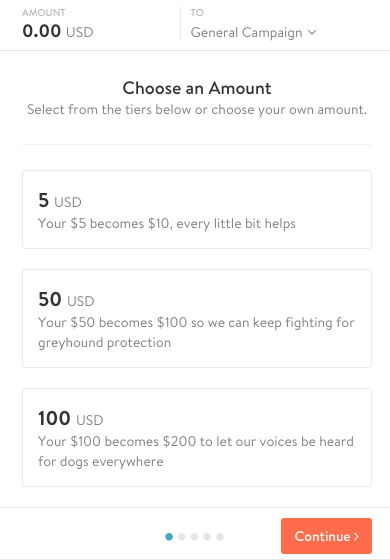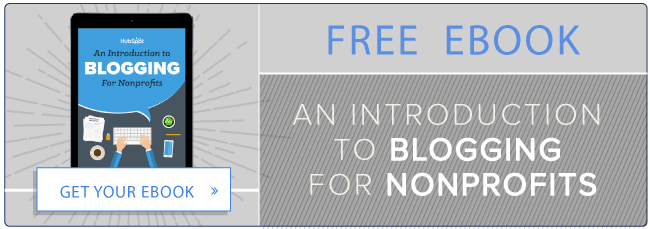
The air is beginning to cool. We’re decorating with pumpkins and gourds, spiders and witches. Fall is definitely in the air. And for organizations that rely on year-end fundraising to round out their budgets, it’s “go time.”
According to the 2014 Digital Giving Index, over 30% of giving occurs at the end of the year, meaning that it’s absolutely necessary for organizations of every shape, size, and mission to schedule fundraising campaigns to capture those dollars. One way to amplify your year-end fundraising efforts is to run a #GivingTuesday campaign.
Since #GivingTuesday started in 2012, nonprofits, charities, and even individuals have encouraged donors to spend a day giving back to the causes that mean the most to them. Because it’s planned smack-dab in the middle of our giving season, it’s not surprising that this “Global Day of Giving” has grown exponentially over the past 4 years. In fact, the Case Foundation reported that between 2014 and 2015, donations raised during this 24-hour period doubled to a whopping $116.7 million.
Are You Ready for #GivingTuesday?
There’s no doubt that #GivingTuesday is a beneficial fundraising vehicle for organizations of all sizes and focuses, ranging from healthcare to international relations. But before you dive into planning your #GivingTuesday campaign, here are 6 questions to ask.
1) Do We Have An Established Donor Base To Tap For Support?
To promote your campaign, you need more than a social media account. Indeed, your greatest #GivingTuesday campaign asset is actually your current donor base.
Start communicating with donors about your #GivingTuesday campaign early. Remind your Facebook followers about the upcoming event with a series of posts, add a post-note at the end of the email newsletter, or start making phone calls.
Communicate the date of the event, your goal, how to donate, ways to share the campaign, etc. When people know about your fundraising plan and goals before #GivingTuesday begins, they’ll be more likely to take action when the time comes.
Also, remember that #GivingTuesday isn’t just about engaging your current supporters but bringing newcomers into the fold. Because of social media and online sharing, it’s now easier than ever before to get your cause (and campaign) shared by your donors to a larger audience. Plus, those connections will be more likely to give because when supporters “vouch” for you through social sharing, they naturally boost your credibility.By mobilizing your current donor base, you’re ensuring that both your donors and their networks know about your #GivingTuesday campaign.
Tip: Use the resources found on the #GivingTuesday website to perfect your appeals. For donor appeals, check out the Sample Outreach Email and the Social Media Toolkit.
2) Do We Run A Holiday or Year-End Campaign Already? If So, How Could #GivingTuesday Fit In?
Just because #GivingTuesday lasts one day doesn’t mean your campaign must follow suit. Even if you already have a year-end fundraising campaign planned, you can still capitalize on the energy surrounding #GivingTuesday by using this day as a campaign kick-off, of sorts.
By promoting #GivingTuesday as the first day or a main event of your year-end campaign, you’re bound to notice an initial donation “bump.” And as all fundraisers know, momentum at the beginning of a fundraising campaign is a great leveraging tool to secure those last donations and meet your goal.
For example, World Bicycle Relief’s 2015 Palabana fundraising campaign kicked off with an “epic” #GivingTuesday that boosted both awareness and support for the cause and helped drive the campaign the rest of the year.
If you don’t already have a year-end campaign scheduled or you’re lacking the resources for a prolonged fundraiser, then promote #GivingTuesday as a one-day event to drive impact.
Tip: Research #GivingTuesday campaigns for organizations similar to yours to help guide your planning. There are a number of case studies available online.
3) Have We Set A Realistic Goal That Is Both Attainable And Impactful?
Whether you’re running a one-day #GivingTuesday campaign or are using this day to kick off a longer drive, you need a goal to match your needs and timeframe.
Your goal can be monetary (dollars raised), impact-driven (i.e. number of lives changed), or ideally a mix of both. The goal you set will depend on what your organization needs to change lives, as well as what you think will elicit a positive donor response.
Aside from meeting the needs of your organization, your goal must also be realistic.
When setting a #GivingTuesday goal, consider the following:
- Prior Performance: Analyze statistics from past fundraising efforts to figure out how many donors you can expect to participate and factor in the average gift.
- External Comparables: Look at the goals of similar organizations/causes
- Cost-Based: Factor your current resources into your goal. For example, if you only have one staff person available to work the campaign, then your goal may be smaller than if you had an entire team or department.
Tip: Create #GivingTuesday donation tiers to promote specific gift amounts that correlate with impact.

Donations tiers on Grey2K’s #GivingTuesday campaign
4) Do We Have An Incentive For People to Participate?
Donor incentives in fundraising aren’t always tangible. Instead, most donors are looking for confirmation of their gift or a way to show off their good deed to others.
To figure out what incentive your donors will appreciate, you must know your donor base. What’s the age, gender, socioeconomic status, and geographic location of your average donor? Gathering these facts and understanding your donor will make it easier to relate and reward them.
On special days like #GivingTuesday when many of your supporters are active online and in the giving community, a simple online badge or Twibbon may do the trick.
Also, never underestimate the power of a “thank you.” Make your “thank you” seem more like a bonus to your donors by tagging them in photos, or giving shout outs in real-time on social media. If you have the time and resources, personally call or email donors after they’ve given. Or, email your donors a video featuring staff and volunteers thanking them for their support.
Donor incentives don’t have to be big or expensive, but they should be meaningful.
Tip: Include a prompt to connect to your social media pages on the donation thank you page.
<
Charity Science’s donation thank you page
5) Who Could We Partner With To Amplify #GivingTuesday Efforts?
#GivingTuesday isn’t just about what you do, but who you know. By connecting with businesses and other nonprofits in your community, you can further amplify your message and leverage the dollars you raise.
Consider these potential partnerships for your #GivingTuesday campaign:
- Business Sponsorships: As fundraisers, we’re often so wrapped up in getting individual donations that we overlook one of our biggest income sources—businesses. And they want to get involved with #GivingTuesday as much as people do!
Start looking for #GivingTuesday partners now by discussing the prospect of a sponsorship or gift match with local business owners and major donors. If you don’t know where to start looking, check out your Chamber of Commerce’s business directory or Double the Donation for a list of companies that already match employee donations.
- Similar Nonprofits/Causes: Partnering with nonprofits in your community with similar goals can also help to amplify your #GivingTuesday campaign. Is there a nonprofit or charity that your clients also go to for support? Do organizations in your town fall under an umbrella association?
Work with nonprofit leaders to create a common goal or to link your campaigns together on social media and through traditional media outlets. Whether it’s based on marketing or increasing similar resources, a partnership can strengthen your reach and amplify your voice.
Tip: If you do secure a gift match, clearly communicate about it as one of the ways you incentivize donors.
6) Do We Have Margins? What Is The Opportunity Cost?
As with all fundraising campaigns, it’s important to be realistic. If you’ve just finished a large campaign in the fall or just don’t have the time or even the funds to run a #GivingTuesday event, then it’s okay to pass this year.
On the other hand, #GivingTuesday is also a great time to try something new. For example, if you haven’t run a one-day fundraiser before or haven’t utilized social media to fundraise, then this could be the right time to try it out on your audience.
Also, keep in mind that 97% of first-time participants said they plan to fundraise again during a future #GivingTuesday event, meaning that many organizations see value and potential in this day.
Weigh the pros and cons carefully to determine if running a #GivingTuesday campaign is right for you.
Tip: Complete a simple cost-benefit analysis before diving in on your #GivingTuesday campaign planning.
Set Yourself Up For Success On #GivingTuesday
Giving Tuesday campaign planning doesn’t have to be hard. Start by determining your needs, then mobilize your audience, set a realistic goal, and find the right incentive for your donor base.
After all’s said and done, you’ll have shared your campaign (and cause) with a broader audience and hopefully gained some new supporters in the process. 
No comments:
Post a Comment